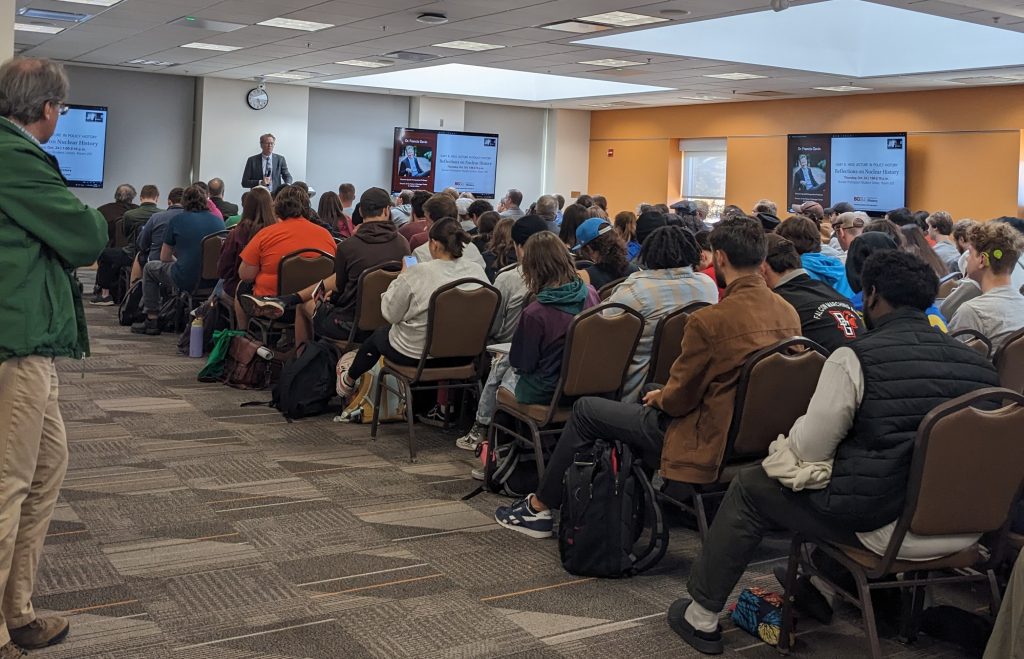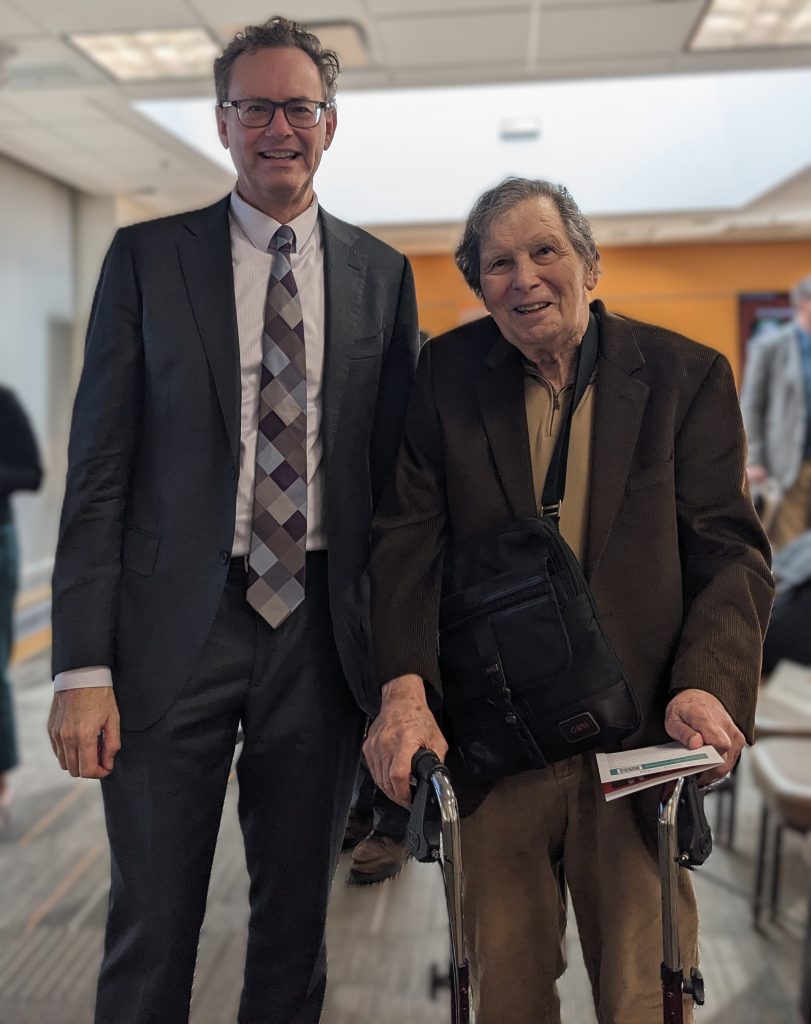Inheriting a world with nuclear weapons is like “buying a house with a ghost in it – you never really get a good night’s sleep, because you always know the ghost is there.”
Dr. Francis Gavin opened his guest lecture with that analogy at the annual Gary R. Hess Lecture in Policy History a few weeks ago. So how are students to navigate a world with nuclear weapons, and be prepared to engage in the debates surrounding them?
Dr. Gavin encouraged students to use their historical thinking skills to consider the role nuclear weapons might play in the rest of the twenty-first century. He maintained that nuclear policy basically boils down to four main questions. These questions are all up for debate as the global order rapidly changes:
- How do nuclear weapons work?
- What are they good for?
- Who gets to have them?
- Are nuclear weapons good or bad – or both or neither?
One History Graduate student in attendance, Andrew Kistler, reflected on the lecture:
“His [Gavin’s] lecture furthered my understanding of modern nuclear weapon systems, tracing their origins, their current trajectory, and the ways nuclear powers may leverage the threat of their deployment to achieve their foreign policy goals.”
The talk provided some context for how these questions have been handled in the past. Dr. Gavin pointed out that these are far from settled questions: “for your generation, in your lifetime, this is all on the table.”
We were delighted that Dr. Gary Hess, for whom the lecture series is named, was able to attend the talk. Dr. Hess taught History at BGSU for forty-five years and is a key scholar in the field of Policy History.


